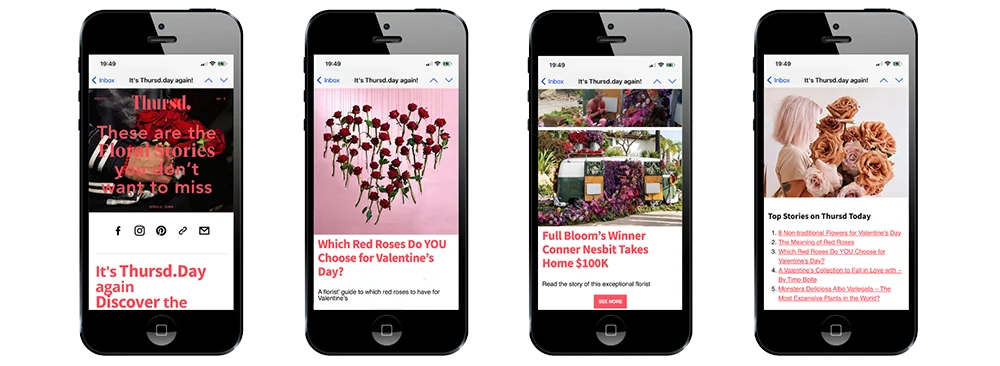As the festive season unfolds, one flower naturally takes the spotlight in homes, floral shops, and public displays: the Poinsettia. Its rich red leaves have long been linked with Christmas, symbolizing the warmth and spirit of the season. Beyond its decorative value, the Poinsettia holds deep cultural and historical meaning that gives it a special place in the hearts of florists, garden enthusiasts, and consumers alike.
This season has just kicked off, and across floral markets around the world, Poinsettias are back in demand. Their presence signals that Christmas has truly arrived. From traditional red to modern white and pink varieties, each plant tells a story of celebration, hope, and continuity that continues to inspire generations.
What Does the Poinsettia Symbolize?
The Poinsettia’s meaning is deeply rooted in both history and tradition. In its native Mexico, the plant was known as Cuetlaxochitl, a flower used by the Aztecs for medicine and dye. It symbolized purity and the cycles of life. When Christianity spread through the region, the plant gained new significance. The shape of its colored bracts was said to resemble the Star of Bethlehem, while its red hue came to represent love and sacrifice.

Over time, the Poinsettia became known as La Flor de Nochebuena, the Christmas Eve Flower. In Christian symbolism, it represents good cheer, success, and the celebration of new beginnings. Today, it continues to be one of the most recognizable flowers of the holiday season, associated with goodwill and togetherness.
For florists and garden lovers, this meaning can be used to connect more deeply with clients. The Poinsettia is more than a plant; it is a reflection of home, gratitude, and renewal.
A Brief History of the Christmas Flower
The Poinsettia’s journey from tropical hillsides to living rooms began in the early nineteenth century when Joel Roberts Poinsett, the first U.S. ambassador to Mexico, introduced the plant to North America. His name later became its common English term-Poinsettia.

In Mexico, the flower had already been part of Christmas celebrations for centuries. Local legend tells of a young girl who, having no gift to offer at a church service, gathered wild green plants along the road. When she placed them at the altar, the leaves turned bright red. From then on, the Poinsettia became a symbol of humble giving and sincere devotion.
Through greenhouse cultivation, the plant adapted to colder climates and found its place in the modern floral industry. Its vibrant color, star-shaped pattern, and ability to thrive indoors made it a perfect Christmas flower.
How Poinsettias Became a Christmas Flower
The Poinsettia’s connection to Christmas spread from Mexico through church displays and missionary traditions. By the late 1800s, it was already used in holiday services and seasonal decorations in both North and South America. As global trade expanded, growers began to cultivate new varieties suited for indoor display. In the twentieth century, the Eckes family in California played a major role in establishing the poinsettia as the official Christmas flower through breeding, marketing, and distribution. Their work transformed what was once a tropical shrub into the signature plant of December.

Today, millions of Poinsettias are sold worldwide every holiday season. For florists, it remains a dependable favorite that captures the essence of Christmas. Its story reflects both cultural heritage and modern horticultural innovation, reminding us that flowers often carry history as much as beauty.
Why Florists and Gardeners Value the Poinsettia Today
Every year, florists prepare for the Poinsettia season with anticipation. It is one of the few flowers that captures the essence of Christmas with such immediacy. Whether arranged as potted plants, part of floral centerpieces, or used in commercial displays, poinsettias communicate warmth and joy.

For garden enthusiasts, the plant offers flexibility. In warm climates, it can grow outdoors as a shrub, returning year after year. In cooler regions, it remains a striking indoor feature. Its enduring appeal makes it a bridge between garden cultivation and indoor décor, something both professionals and home growers can appreciate. This season, as consumer demand increases, featuring Poinsettias early allows florists to align with the emotional pulse of the holidays. The more a shop ties the flower’s story to its presentation, the stronger the connection it builds with customers.
How to Care for Poinsettias
Caring for a Poinsettia is straightforward when its tropical origins are understood. The plant thrives in bright, indirect light and prefers moderate warmth. Avoid exposing it to cold drafts or intense heat, as these extremes can cause leaves to fall. Water only when the top layer of soil feels dry, ensuring the pot drains well to prevent root damage.

For those who wish to keep their poinsettia beyond the holidays, pruning after the blooming season encourages new growth. With consistent care, the plant can rebloom the following year. Sharing this information with clients adds value and demonstrates expertise, transforming a single purchase into an ongoing relationship.
Pro Tip: When showcasing Poinsettias, remind your clients that their beauty lasts far longer than the holiday week. Encourage them to see the plant as a living reminder of continuity and celebration, something that grows alongside their own traditions.
Creative Uses in Arrangements and Displays This Season
The Poinsettia is a powerful centerpiece flower that can adapt to many styles. For florists, combining it with winter greens such as pine, cypress, and eucalyptus brings a natural festive feel. Red and white Poinsettias placed side by side create contrast and visual depth, while pink or marbled varieties offer a softer modern tone for contemporary designs.

In event work, Poinsettias can be used to line entryways, frame staircases, or accent tabletops in clear vases or ceramic pots. Garden centers can stage them in clusters with candles or lanterns to draw attention to their structure and color.
For home decorators, mixing Poinsettias with berries, magnolia leaves, or dry twigs creates an inviting natural display. The goal is not to overpower the space but to let the plant speak through balance and placement. This year, as the Christmas flower season begins, creative display ideas help retailers stand out and give consumers new reasons to bring poinsettias home.
Color Meanings in Poinsettias
The red Poinsettia remains the most popular choice, symbolizing love, celebration, and faith. White varieties reflect purity and peace, often chosen for minimalist or modern settings. Pink Poinsettias, increasingly in demand, convey affection and warmth.

Each color offers florists and garden centers the opportunity to tailor arrangements for different moods or spaces. Red captures the spirit of Christmas, while white and pink bring calm balance to contemporary interiors. Blending these shades within one display can also create visual harmony, perfect for the festive season that has just begun.
Common Myths and Lesser-Known Facts
Many people assume that the bright leaves of the Poinsettia are the flowers, but they are actually bracts, modified leaves that change color when the plant receives shorter daylight hours. The true flowers are the small yellow buds at the center.

Another myth is that Poinsettias are highly toxic. In reality, while the sap can irritate the skin, the plant is not deadly to humans or pets. Educating clients on this point can ease concerns and increase confidence in purchase decisions.
The Season Begins
The Poinsettia season has officially begun, and its presence marks the start of festive celebrations. Across nurseries and flower shops, growers and florists are preparing displays that capture the joy of Christmas through this single plant. It is a moment to bring warmth and meaning into homes, to celebrate family and tradition, and to remind customers why this flower has become a universal symbol of the season.
The Poinsettia is more than a flower. It is a story that connects people, history, and celebration. From its origins in Mexico to its global role as the Christmas flower, it continues to bridge cultures and emotions.

For florists and garden enthusiasts, this season presents an opportunity to reintroduce the Poinsettia with a fresh perspective. Highlight its meaning, guide clients on care, and share its story. In doing so, you transform a plant into a symbol of connection, renewal, and festive joy.
As the season unfolds, let the Poinsettia remind us that the simplest gifts often carry the most lasting meaning.
Header image by Pastime Antiques.




